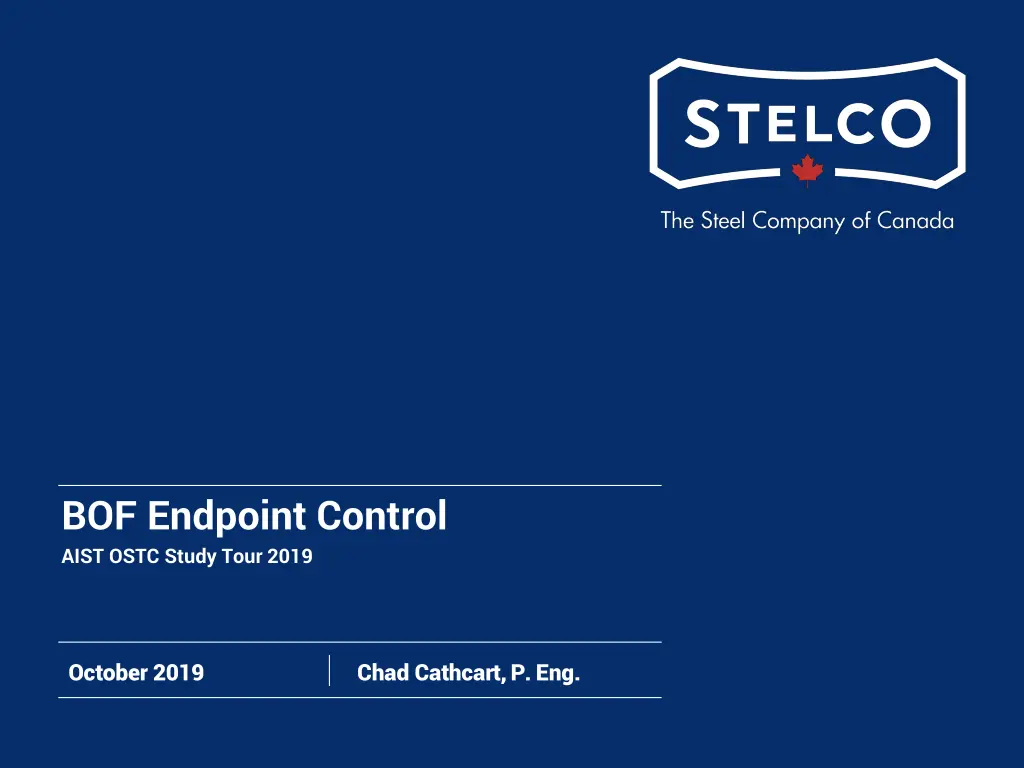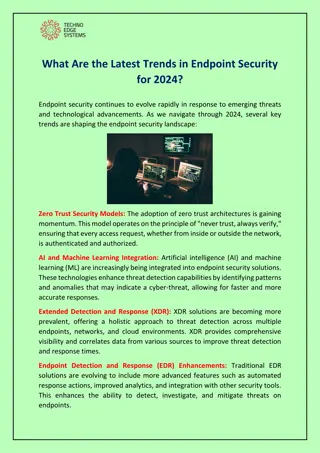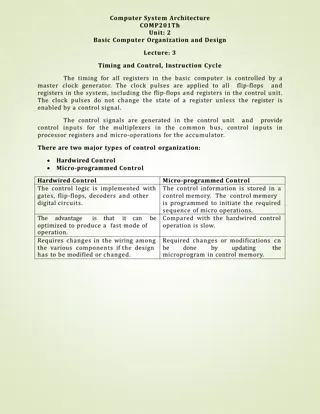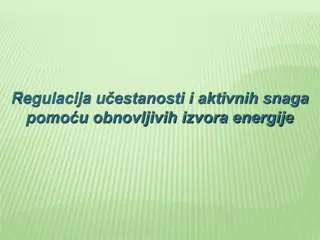
Steelmaking Overview and Control in Stelco
Explore the steelmaking journey at Stelco, from its groundbreaking in 1974 to the advanced control strategies used in the Basic Oxygen Steelmaking Complex. Discover the equipment, control strategies, and end-of-blow gas analysis methods employed in this industrial marvel located on the north shore of Lake Erie in Ontario.
Download Presentation

Please find below an Image/Link to download the presentation.
The content on the website is provided AS IS for your information and personal use only. It may not be sold, licensed, or shared on other websites without obtaining consent from the author. If you encounter any issues during the download, it is possible that the publisher has removed the file from their server.
You are allowed to download the files provided on this website for personal or commercial use, subject to the condition that they are used lawfully. All files are the property of their respective owners.
The content on the website is provided AS IS for your information and personal use only. It may not be sold, licensed, or shared on other websites without obtaining consent from the author.
E N D
Presentation Transcript
BOF Endpoint Control AIST OSTC Study Tour 2019 October 2019 Chad Cathcart, P. Eng.
Stelco Steelmaking Overview PICKLING STEELMAKING HOT STRIP MILL IRONMAKING MAINTENANCE CENTRAL BOILER STATION COKEMAKING Ground breaking in 1974; start-up in 1980 Located on the north shore of Lake Erie in Ontario 6,600 acres (2,670 hectares) of Zoned Industrial Land 2,200 acres (890 hectares) steel mill mile (1.2 kilometre) dock Access by Road, Rail & Water
Basic Oxygen Steelmaking Complex Transfer Ladle Desulphurization with Rotary Lance 2 Top-blown BOF Vessels with a heat size of 275 tons (250 tonnes) Ladle Trim Station (LTS) and RHOB Vacuum Degassing in secondary steelmaking Twin strand caster upgraded in 1997
BOF Endpoint Control Equipment Top blown only 3-port lances currently in use (previously using 4-port) Suppressed combustion hoods Off-gas analysis from both hood and stack Recently upgraded analysers from mass spectrometers to linear photometric system (quicker response time, reduced maintenance) No off-gas temperature measurement Drop Bomb thermocouple system for temperature only or temperature/oxygen measurement > 90% Direct tap Aim for sample during tapping on every heat
BOF Endpoint Control Strategy Static Charge Model Currently blow all heats to an aim of 0.045% C Input weights (Hot metal & Scrap) calibrated minimum every 6 weeks Drop Bomb thermocouple at 90% of blow for temperature only Operator adjusts based on off-gas measurement End blow confirmation by temperature-oxygen bomb and/or turndown sample
End-of-Blow Off Gas Analysis Hood 80 70 60 50 Estimated C=0.10% % Vol 40 Estimated C=0.045% 30 20 10 0 1:30:43 AM 1:31:26 AM 1:32:10 AM 1:32:53 AM 1:33:36 AM 1:34:19 AM 1:35:02 AM 1:35:46 AM 1:36:29 AM Time Hood CO Hood CO2 Hood O2
End-of-Blow Off Gas Analysis 80 70 60 50 Time between Hood and Stack Analyzer 30-45s % Vol 40 30 20 10 0 1:30:43 AM 1:31:26 AM 1:32:10 AM 1:32:53 AM 1:33:36 AM 1:34:19 AM 1:35:02 AM 1:35:46 AM 1:36:29 AM Time Hood CO Hood CO2 Hood O2 Stack CO Stack CO2 Stack O2
Current Work & Future Development Hood analyzer is quicker than stack by approximately 30-45 sec, but can vary based on gas flow Hood analyzer typically shows more variability Sampling and gas cleaning system Impact of bulk gas flow rates on response times Investigating calibration methods to ensure consistency between hood and stack analyzers (and vessel to vessel) Upgrading position sensors for lance height determination Developing dynamic end-point prediction model based on off-gas measurement
Thank You. stelcocanada.com






















